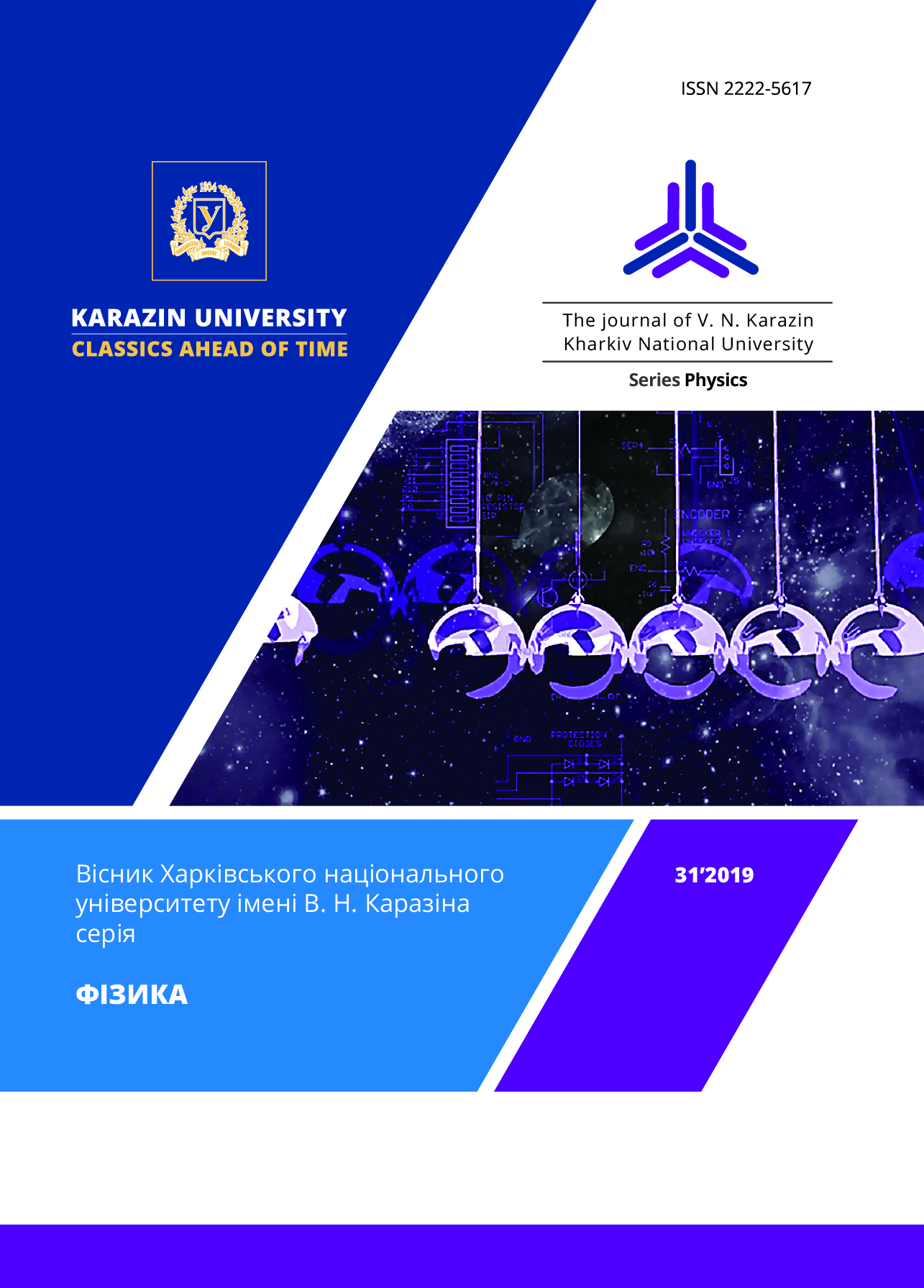Турбулентність дрейфових хвиль і аномальна дифузія плазми в ніжньогібридних порожнинах, що спостерігаються в земній іоносфері
Анотація
В плазмі верхньої іоносфери Землі були виявлені області з збідненою щільністю плазми і підвищеним рівнем в порівнянні з навколишнім середовищем коливань з нижньогібридною частотою. Встановлено, що такі порожнини щільності плазми мають циліндричну симетрію і витягнуті уздовж геомагнітного поля, так що поздовжні розміри значно перевищують поперечні. Такі структури названі нижньогібридними порожнинами, досить стійкі, так що при проходженні через них космічні апарати не спостерігають значних змін параметрів порожнин. Таким чином, характер зміни порожнин з плином часу залишається неясним. В цій статті ми теоретично досліджуємо часову еволюцію порожнини в плазмі іоносфери. Оскільки збіднення щільності плазми є циліндрично-симетричною областю, воно створює радіальну неоднорідність в плазмі. У свою чергу, неоднорідність плазми призводить до розвитку низькочастотної дрейфової нестійкості і турбулентного стану плазми. Аномальна дифузія плазми поперек геомагнітного поля в результаті розвитку турбулентності дрейфовий хвиль неоднорідної плазми розглядається як механізм зміни порожнини. У даній роботі вирішується рівняння дифузії плазми в порожнині, де початкове радіальний розподіл щільності плазми є перевернутим гаусовим. Дифузія плазми відбувається радіально до центра, оскільки щільність плазми збільшується зі збільшенням радіальної координати. Отриманий розв’язок рівняння дифузії дає швидкість зменшення глибини порожнини. Крім зменшення глибини порожнини, також відбувається її розширення, однак розширення порожнини відбувається повільніше, ніж зменшення глибини. В роботі наведені графіки розподілу щільності плазми по радіусу для кількох значень часу, які показують часову еволюцію порожнини. Ці залежності показують, що за час порядку 1 секунди порожнина істотно змінюється, але не зникає повністю.
Завантаження
Посилання
P.W. Schuck J. W. Bonnell, P. M. Kintner IEEE Trans. Plasma Sci. 2003. vol. 31, №6, p. 1125-1177.
D.V. Chibisov, V.S. Mikhailenko, K.N. Stepanov. Phys. Lett. A. 1991. Vol.157. P.141-145.
V.S. Mikhailenko, K.N. Stepanov, D.V. Chibisov. Soviet Journal of Plasma Physics. 1991, vol.17. №10, p.710-716.
V.S. Mikhailenko, K.N. Stepanov, D.V. Chibisov. Plasma Phys. Control. Fusion. 1992, v.34, №1, p. 95–117.
V.S. Mikhailenko, K.N. Stepanov, D.V. Chibisov. Plasma Phys. Rep. 1995, vol.21. №12, p.141-150.
N.A. Azarenkov, D.V. Chibisov, Problems of Atomic Science and Technology. – 2018. – №6. Pp. 117–120








3.gif)
